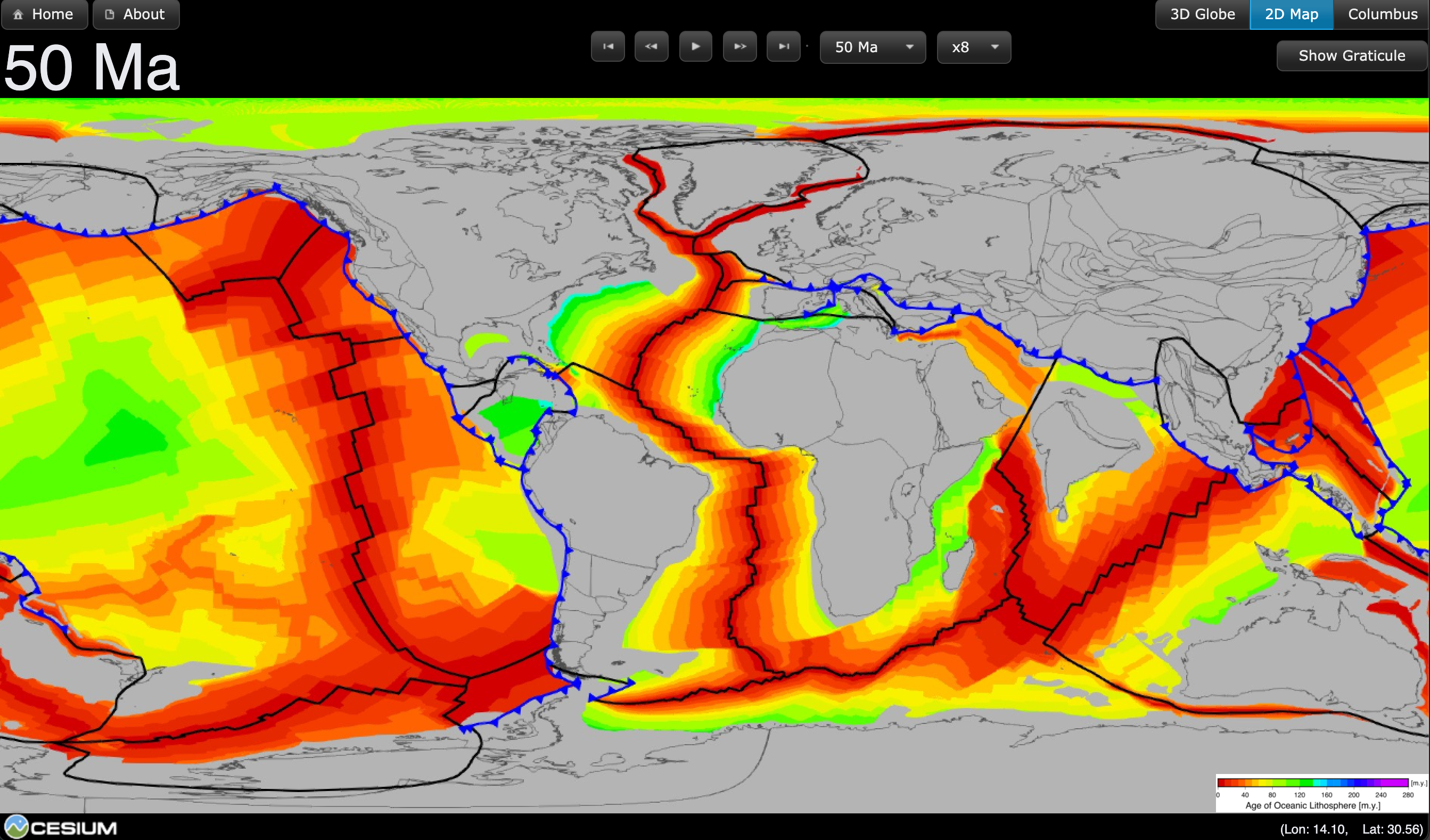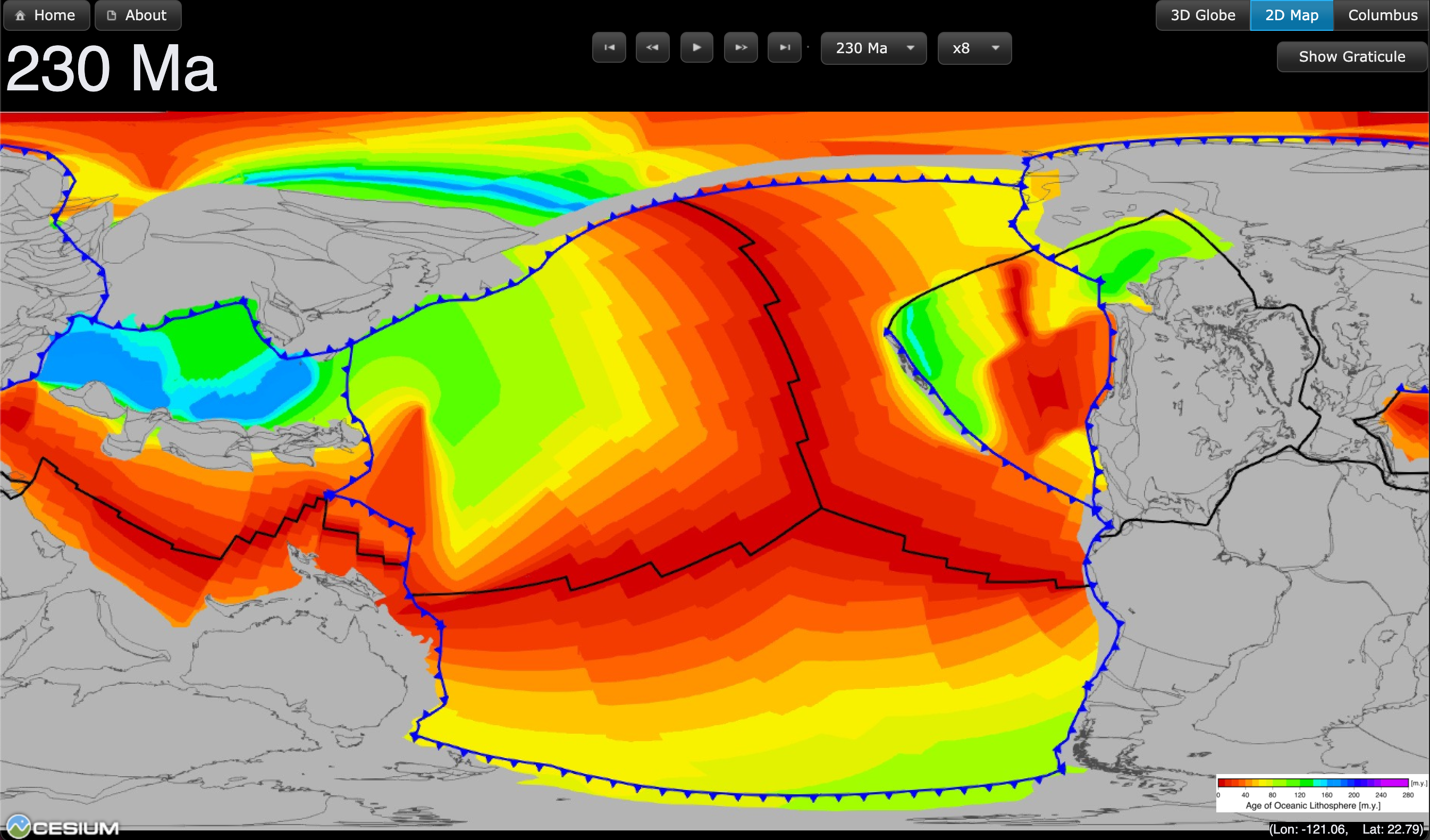Reconstruction of Seafloor-Spreading Age Grid of The Ocean Floor
Conventional models of global plate motions once took the form of reconstructed map snapshots through time, often without an accompanying digital rotation model describing the motions of the plates and without present-day digital plate polygons that clarify which features on Earth's surface moved according to which plate. Most importantly, these models lacked a sense of the time-dependence of plate boundary configurations, prompting the development of a new generation of global plate motion models that reflect the dynamic nature of the plates themselves through a set of continuously closing plate polygons. These new topological plate motion models play a key role in enabling the computation of plate velocities for the entire surface of the globe through time, for evaluating the time-dependence of the distribution of plate sizes, and for linking alternative plate kinematic models to global geodynamic models. Equally critical is their usefulness in the computation of plate boundary lengths through time to investigate crustal production along mid-ocean ridges.
The ability of the geology and geophysics community to generate the next generation of plate reconstructions has been dramatically improved by the open-source GPlates software and its associated Geological Information Model. GPlates enables the construction of global plate hierarchies and rotation files and allows the testing of alternative plate motion models. It includes the functionality to construct continuously closing plate polygons, representing a global network of moving plate boundaries that can be closed on the fly to form a complete global network of interlocking plate polygons.
The first global plate model with continuously closing plate boundaries was published by Gurnis and covered most of the Cretaceous and Cenozoic periods (140 Ma to the present). It formed the basis for several studies, including a comparison of five alternative global absolute plate motion models in terms of their predicted subduction and mantle convection history, an analysis of global net rotation of the plates through time, and modeling of lower mantle structure. This was superseded by the global plate model of Seton, which covers the entire time period from the breakup of Pangea to the present and contains a range of regional improvements over the previous models. Recently, this model was used to generate a detailed analysis of global plate velocities and plate events since 200 Ma. Another distinguishing aspect of this new generation of plate models is that they include complete reconstructions of the age-area distribution of the ocean floor. This in turn facilitates an exploration of the connection between tectonic events and fluctuations in ocean chemistry as well as global climate events through time.
View Agegrid Reconstruction Map in 3D Globe
More Information About The Age Grid Reconstruction
References:
- Müller, R. D., Zahirovic, S., Williams, S. E., Cannon, J., Seton, M., Bower, D. J., Tetley, M. G., Heine, C., Le Breton, E., Liu, S., Russell, S. H. J., Yang, T., Leonard, J., and Gurnis, M. (2019), A global plate model including lithospheric deformation along major rifts and orogens since the Triassic. Tectonics, vol. 38, https://doi.org/10.1029/2018TC005462.


